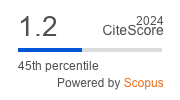Противоопухолевая активность синтетических производных нафтохинона (обзор)
https://doi.org/10.33380/2305-2066-2025-14-1-1852
Аннотация
Введение. Рак является основной причиной смертности во всем мире. Нафтохиноны – группа природных органических соединений с широким спектром активности, включающим кардио-, гепато-, нейропротективное действие, а также противомикробную, противовоспалительную и противоопухолевую активность. 1,4-нафтохинон легко поддается окислению, восстановлению, присоединяет нуклеофилы. Простые и хорошо разработанные методы химической модификации нафтохинонов делают их привлекательными для разработки новых соединений. Известно о противоопухолевом действии природных соединений нафтохинона – плюмбагина, шиконина, лапахола. Такие противоопухолевые антибиотики, как доксорубицин, даунорубицин, имеют в своей структуре 1,4-нафтохиноновый фрагмент.
Текст. Настоящий обзор посвящен анализу информации о механизмах противоопухолевого действия синтетических производных 1,4-нафтохинона. Обсуждаются возможные мишени их противоопухолевого действия.
Заключение. Анализ литературных данных показал, что синтетические соединения на основе молекулы 1,4-нафтохинона обладают противоопухолевым потенциалом. Механизм их противоопухолевого действия может быть связан с индукцией апоптоза через сигнальный путь митогенактивируемой протеинкиназы (МАРК) и путь сигнального преобразователя и активатора транскрипции 3 (STAT3), с ингибированием фосфатазы клеточного цикла (Cdc25), накоплением активных форм кислорода (АФК), угнетением ангиогенеза. Данные, полученные исследователями разных стран, подтверждают перспективность поиска новых соединений с противоопухолевой активностью среди синтетических производных 1,4-нафтохинона для разработки на их основе новых лекарственных средств.
Об авторах
Е. Л. ГоловинаРоссия
634050, г. Томск, Московский тракт, д. 2
В. А. Серебрякова
Россия
634050, г. Томск, Московский тракт, д. 2
О. Е. Ваизова
Россия
634050, г. Томск, Московский тракт, д. 2
Список литературы
1. Thomson R. H., Naturally occurring quinones. 4th ed. London, New York: Blackie Academic & Professional; 1997. 746 p.
2. Shen X., Liang X., He C., Yin L., Xu F., Li H., Tang H., Lv C. Structural and pharmacological diversity of 1,4-naphthoquinone glycosides in recent 20 years. Bioorganic Chemistry. 2023;138:106643. DOI: 10.1016/j.bioorg.2023.106643.
3. Aminin D., Polonik S. 1,4-Naphthoquinones: Some Biological Properties and Application. Chemical and Pharmaceutical Bulletin. 2020;68(1):46–57. DOI: 10.1248/cpb.c19-00911.
4. Mahmoud I.S., Hatmal M.M., Abuarqoub D., Esawi E., Zalloum H., Wehaibi S., Nsairat H., Alshaer W. 1,4-Naphthoquinone Is a Potent Inhibitor of IRAK1 Kinases and the Production of Inflammatory Cytokines in THP-1 Differentiated Macrophages. ACS Omega. 2021;6(39):25299–25310. DOI: 10.1021/acsomega.1c03081.
5. Ravichandiran P., Sheet S., Premnath D., Kim A. R., Yoo D. J. 1,4-Naphthoquinone Analogues: Potent Antibacterial Agents and Mode of Action Evaluation. Molecules. 2019;24(7):1437. DOI: 10.3390/molecules24071437.
6. Kayashima T., Mori M., Yoshida H., Mizushina Y., Matsubara K. 1,4-Naphthoquinone is a potent inhibitor of human cancer cell growth and angiogenesis. Cancer Letters. 2009;278(1):34–40. DOI: 10.1016/j.canlet.2008.12.020.
7. Tripathi S. K., Panda M., Biswal B. K. Emerging role of plumbagin: Cytotoxic potential and pharmaceutical relevance towards cancer therapy. Food and Chemical Toxicology. 2019;125:566–582. DOI: 10.1016/j.fct.2019.01.018.
8. Yadav S., Sharma A., Nayik G. A., Cooper R., Bhardwaj G., Singh Sohal H., Mutreja V., Kaur R., Areche F. O., AlOudat M., Shaikh A. M., Kovács B., Ahmed A. E. M. Review of Shikonin and Derivatives: Isolation, Chemistry, Biosynthesis, Pharmacology and Toxicology. Frontiers in Pharmacology. 2022;13:905755. DOI: 10.3389/fphar.2022.905755.
9. Mendes Miranda S. E., de Alcântara Lemos J., Salgado Fernandes R., de Oliveira Silva J., Ottoni F. M., Townsend D. M., Rubello D., Alves R. J., Cassali G. D., Miranda Ferreira L. A., Branco de Barros A. L. Enhanced antitumor efficacy of lapachol-loaded nanoemulsion in breast cancer tumor model. Biomedicine & Pharmacotherapy. 2021;133:110936. DOI: 10.1016/j.biopha.2020.110936.
10. Muggia F. M., Green M. D. New anthracycline antitumor antibiotics. Critical Reviews in Oncology/Hematology. 1991;11(1):43–64. DOI: 10.1016/1040-8428(91)90017-7.
11. Liu Y., Cai Y., He C., Chen M., Li H. Anticancer Properties and Pharmaceutical Applications of Plumbagin: A Review. The American Journal of Chinese Medicine. 2017;45(3):423–441. DOI: 10.1142/S0192415X17500264.
12. Yan C., Li Q., Sun Q., Yang L., Liu X., Zhao Y., Shi M., Li X., Luo K. Promising Nanomedicines of Shikonin for Cancer Therapy. International Journal of Nanomedicine. 2023;18:1195–1218. DOI: 10.2147/IJN.S401570.
13. Thakor N., Janathia B. Plumbagin: A Potential Candidate for Future Research and Development. Current Pharmaceutical Biotechnology. 2022;23(15):1800–1812. DOI: 10.2174/1389201023666211230113146.
14. Deniz N. G., Ibis C., Gokmen Z., Stasevych M., Novikov V., Komarovska-Porokhnyavets O., Ozyurek M., Guclu K., Karakas D., Ulukaya E. Design, Synthesis, Biological Evaluation, and Antioxidant and Cytotoxic Activity of Heteroatom-Substituted 1,4-Naphthoand Benzoquinones. Chemical & Pharmaceutical Bulletin. 2015;63(12):1029–1039. DOI: 10.1248/cpb.c15-00607.
15. Golmakaniyoon S., Askari V.R., Abnous K., Zarghi A., Ghodsi R. Synthesis, Characterization and In-vitro Evaluation of Novel Naphthoquinone Derivatives and Related Imines: Identification of New Anticancer Leads. Iranian Journal of Pharmaceutical Research. 2019;18(1):16–29.
16. Xu X., Lai Y., Hua Z.-C. Apoptosis and apoptotic body: disease message and therapeutic target potentials. Bioscience Reports. 2019;39(1):BSR20180992. DOI: 10.1042/BSR20180992.
17. Newton K., Strasser A., Kayagaki N., Dixit V. M. Cell death. Cell. 2024;187(2):235–256. DOI: 10.1016/j.cell.2023.11.044.
18. Thornberry N. A., Lazebnik Yu. Caspases: enemies within. Science. 1998;281(5381):1312–1316. DOI: 10.1126/science.281.5381.1312.
19. Asadi M., Taghizadeh S., Kaviani E., Vakili O., Taheri-Anganeh M., Tahamtan M., Savardashtaki A. Caspase-3: Structure, function, and biotechnological aspects. Biotechnology and Applied Biochemistry. 2022;69(4):1633–1645. DOI: 10.1002/bab.2233.
20. Lamkanfi M., Kanneganti T.-D. Caspase-7: a protease involved in apoptosis and inflammation. The International Journal of Biochemistry & Cell Biology. 2010;42(1):21–24. DOI: 10.1016/j.biocel.2009.09.013.
21. Pistritto G., Trisciuoglio D., Ceci C., Garufi A., D'Orazi G. Apoptosis as anticancer mechanism: function and dysfunction of its modulators and targeted therapeutic strategies. Aging. 2016;8(4):603–619. DOI: 10.18632/aging.100934.
22. Chipuk J. E., Green D. R. How do BCL-2 proteins induce mitochondrial outer membrane permeabilization? Trends in Cell Biology. 2008;18(4):157–164. DOI: 10.1016/j.tcb.2008.01.007.
23. Kim H., Rafiuddin-Shah M., Tu H.-C., Jeffers J. R., Zambetti G. P., Hsieh J. J.-D., Cheng E. H.-Y. Hierarchical regulation of mitochondrion-dependent apoptosis by BCL-2 subfamilies. Nature Cell Biology. 2006;8(12):1348–1358. DOI: 10.1038/ncb1499.
24. Zhang W., Liu H. T. MAPK signal pathways in the regulation of cell proliferation in mammalian cells. Cell Research. 2002;12:9–18. DOI: 10.1038/sj.cr.7290105.
25. Wu Q., Wu W., Fu B., Shi L., Wang X., Kuca K. JNK signaling in cancer cell survival. Medicinal Research Reviews. 2019;39(6):2082–2104. DOI: 10.1002/med.21574.
26. Davis R. J. Signal transduction by the JNK group of MAP kinases. Cell. 2000;103(2):239–252. DOI: 10.1016/s0092-8674(00)00116-1.
27. Schepetkin I. A., Karpenko A. S., Khlebnikov A. I., Shibinska M. O., Levandovskiy I. A., Kirpotina L. N., Danilenko N. V., Quinn M. T. Synthesis, anticancer activity, and molecular modeling of 1,4-naphthoquinones that inhibit MKK7 and Cdc25. European Journal of Medicinal Chemistry. 2019;183:111719. DOI: 10.1016/j.ejmech.2019.111719.
28. Lavecchia A., Coluccia A., Di Giovanni C., Novellino E. Cdc25B phosphatase inhibitors in cancer therapy: latest developments, trends and medicinal chemistry perspective. Anti-Cancer Agents in Medicinal Chemistry. 2008;8(8):843–856. DOI: 10.2174/187152008786847783.
29. Kristjánsdóttir K., Rudolph J. Cdc25 phosphatases and cancer. Chemistry & Biology. 2004;11(8):1043–1051. DOI: 10.1016/j.chembiol.2004.07.007.
30. Kim B.-H., Yi E. H., Ye S.-K. Signal transducer and activator of transcription 3 as a therapeutic target for cancer and the tumor microenvironment. Archives of Pharmacal Research. 2016;39(8):1085–1099. DOI: 10.1007/s12272-016-0795-8.
31. Hu Y., Dong Z., Liu K. Unraveling the complexity of STAT3 in cancer: molecular understanding and drug discovery. Journal of Experimental & Clinical Cancer Research. 2024;43(1):23. DOI: 10.1186/s13046-024-02949-5.
32. Fruehauf J. P., Meyskens F. L. Reactive oxygen species: a breath of life or death? Clinical Cancer Research. 2007;13(3):789–794. DOI: 10.1158/1078-0432.CCR-06-2082.
33. Schumacker P. T. Reactive oxygen species in cancer cells: live by the sword, die by the sword. Cancer Cell. 2006;10(3):175–176. DOI: 10.1016/j.ccr.2006.08.015.
34. Kumar N., Shukla A., Kumar S., Ulasov I., Singh R. K., Kumar S., Patel A., Yadav L., Tiwari R., Paswan R., Mohanta S. P., Kaushalendra, Antil J., Acharya A. FNC (4'-azido-2'-deoxy-2'-fluoro(arbino)cytidine) as an Effective Therapeutic Agent for NHL: ROS Generation, Cell Cycle Arrest, and Mitochondrial-Mediated Apoptosis. Cell Biochemistry and Biophysics. 2024;82:623–639. DOI: 10.1007/s12013-023-01193-6.
35. Wang Y., Luo Y.-H., Piao X.-J., Shen G.-N., Meng L.-Q., Zhang Y., Wang J.-R., Li J.-Q., Wang H., Xu W.-T., Liu Y., Zhang Y., Zhang T., Wang S.-N., Sun H.-N., Han Y.-H., Jin M.-H., Zang Y.-Q., Zhang D.-J., Jin C.-H. Novel 1,4-naphthoquinone derivatives induce reactive oxygen species-mediated apoptosis in liver cancer cells. Molecular Medicine Reports. 2019;19(3):1654–1664. DOI: 10.3892/mmr.2018.9785.
36. Wang H., Luo Y.-H., Shen G.-N., Piao X.-J., Xu W.-T., Zhang Y., Wang J.-R., Feng Y.-C., Li J.-Q., Zhang Y., Zhang T., Wang S.-N., Xue H., Wang H.-X., Wang C.-Y., Jin C.-H. Two novel 1,4-naphthoquinone derivatives induce human gastric cancer cell apoptosis and cell cycle arrest by regulating reactive oxygen species-mediated MAPK/Akt/STAT3 signaling pathways. Molecular Medicine Reports. 2019;20(3):2571–2582. DOI: 10.3892/mmr.2019.10500.
37. Dyshlovoy S. A., Pelageev D. N., Jakob L. S., Borisova K. L., Hauschild J., Busenbender T., Kaune M., Khmelevskaya E. A., Graefen M., Bokemeyer C., Anufriev V. P., von Amsberg G. Activity of New Synthetic (2-Chloroethylthio)-1,4-naphthoquinones in Prostate Cancer Cells. Pharmaceuticals. 2021;14(10):949. DOI: 10.3390/ph14100949.
38. Ravichandiran P., Subramaniyan S. A., Kim S.-Y., Kim J.-S., Park B.-H., Shim K. S., Yoo D. J. Synthesis and Anticancer Evaluation of 1,4-Naphthoquinone Derivatives Containing a Phenylaminosulfanyl Moiety. ChemMedChem. 2019;14(5):532–544. DOI: 10.1002/cmdc.201800749.
39. Liu Y., Luo Y.-H., Li S.-M., Shen G.-N., Wang J.-R., Zhang Y., Feng Y.-C., Xu W.-T., Zhang Y., Zhang T., Xue H., Wang H.-X., Cui Y., Wang Y., Jin C.-H. 2-(Naphthalene-2-thio)-5,8-dimethoxy-1,4-naphthoquinone induces apoptosis via ROS-mediated MAPK, AKT, and STAT3 signaling pathways in HepG2 human hepatocellular carcinoma cells. Drug and Chemical Toxicology. 2022;45(1):33–43. DOI: 10.1080/01480545.2019.1658767.
40. Robinson A. G. J., Kanaan Y. M., Copeland R. L. Combinatorial Cytotoxic Effects of 2,3-Dichloro-5,8-dimethoxy-1,4-naphthoquinone and 4-hydroxytamoxifen in Triple-negative Breast Cancer Cell Lines. Anticancer Research. 2020;40(12):6623–6635. DOI: 10.21873/anticanres.14687.
41. Copeland R. L. (Jr.), Das J. R., Bakare O., Enwerem N. M., Berhe S., Hillaire K., White D., Beyene D., Kassim O. O., Kanaan Y. M. Cytotoxicity of 2,3-dichloro-5,8-dimethoxy-1,4-naphthoquinone in androgen-dependent and -independent prostate cancer cell lines. Anticancer Research. 2007;27:1537–1546.
42. Tremblay G. B., Bergeron D., Giguere V. 4-Hydroxytamoxifen is an isoform-specific inhibitor of orphan estrogen-receptor-related (ERR) nuclear receptors β and γ. Endocrinology. 2001;142(10):4572–4575. DOI: 10.1210/endo.142.10.8528.
43. Austin D., Hamilton N., Elshimali Y., Pietras R., Wu Y., Vadgama J. Estrogen receptor-beta is a potential target for triple negative breast cancer treatment. Oncotarget. 2018;9(74):33912–33930. DOI: 10.18632/oncotarget.26089.
44. De Sousa Portilho A. J., da Silva E. L., Austregésilo Bezerra E. C., Borges de Souza Moraes Rego Gomes C., Ferreira V., Amaral de Moraes M. E., Rodrigues da Rocha D., Rodriguez Burbano R. M., Aquino Moreira-Nunes C., Carvalho Montenegro R. 1,4-Naphthoquinone (CNN1) Induces Apoptosis through DNA Damage and Promotes Upregulation of H2AFX in Leukemia Multidrug Resistant Cell Line. International Journal of Molecular Sciences. 2022;23(15):8105. DOI: 10.3390/ijms23158105.
45. Podhorecka M., Skladanowski A., Bozko P. H2AX Phosphorylation: Its Role in DNA Damage Response and Cancer Therapy. Journal of Nucleic Acids. 2010;2010:920161. DOI: 10.4061/2010/920161.
46. Kadela-Tomanek M., Krzykawski K., Halama A., Kubina R. Hybrids of 1,4-Naphthoquinone with Thymidine Derivatives: Synthesis, Anticancer Activity, and Molecular Docking Study. Molecules. 2023;28(18):6644. DOI: 10.3390/molecules28186644.
47. Patel S. A., Nilsson M. B., Le X., Cascone T., Jain R. K., Heymach J. V. Molecular Mechanisms and Future Implications of VEGF/VEGFR in Cancer Therapy. Clinical Cancer Research. 2023;29(1):30–39. DOI: 10.1158/1078-0432.CCR-22-1366.
48. Murota H., Shinya T., Nishiuchi A., Sakanaka M., Toda K.-I., Ogata T., Hayama N., Kimachi T., Takahashi S. Inhibition of angiogenesis and tumor growth by a novel 1,4-naphthoquinone derivative. Drug Development Research. 2019;80(3):395–402. DOI: 10.1002/ddr.21513.
49. Hsu M.-J., Chen H.-K., Lien J.-C., Huang Y.-H., Huang S.-W. Suppressing VEGF-A/VEGFR-2 Signaling Contributes to the Anti-Angiogenic Effects of PPE8, a Novel Naphthoquinone-Based Compound. Cells. 2022;11(13):2114. DOI: 10.3390/cells11132114.
Дополнительные файлы
|
|
1. Графический абстракт | |
| Тема | ||
| Тип | Прочее | |
Посмотреть
(192KB)
|
Метаданные ▾ | |
Рецензия
Для цитирования:
Головина Е.Л., Серебрякова В.А., Ваизова О.Е. Противоопухолевая активность синтетических производных нафтохинона (обзор). Разработка и регистрация лекарственных средств. 2025;14(1):103-111. https://doi.org/10.33380/2305-2066-2025-14-1-1852
For citation:
Golovina E.L., Serebryakova V.A., Vaizova O.E. Antitumor activity of synthetic naphthoquinone derivatives (review). Drug development & registration. 2025;14(1):103-111. (In Russ.) https://doi.org/10.33380/2305-2066-2025-14-1-1852










































